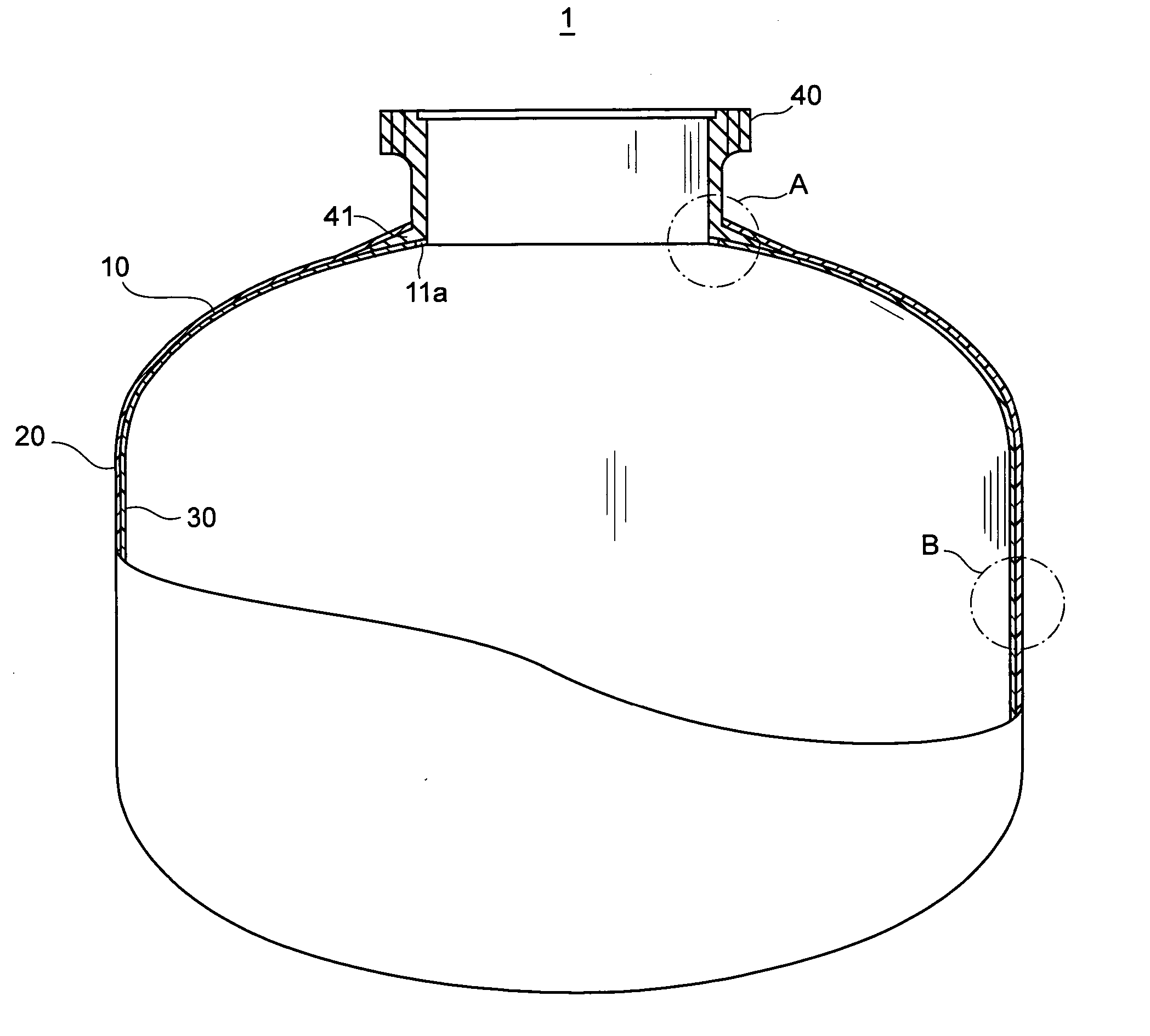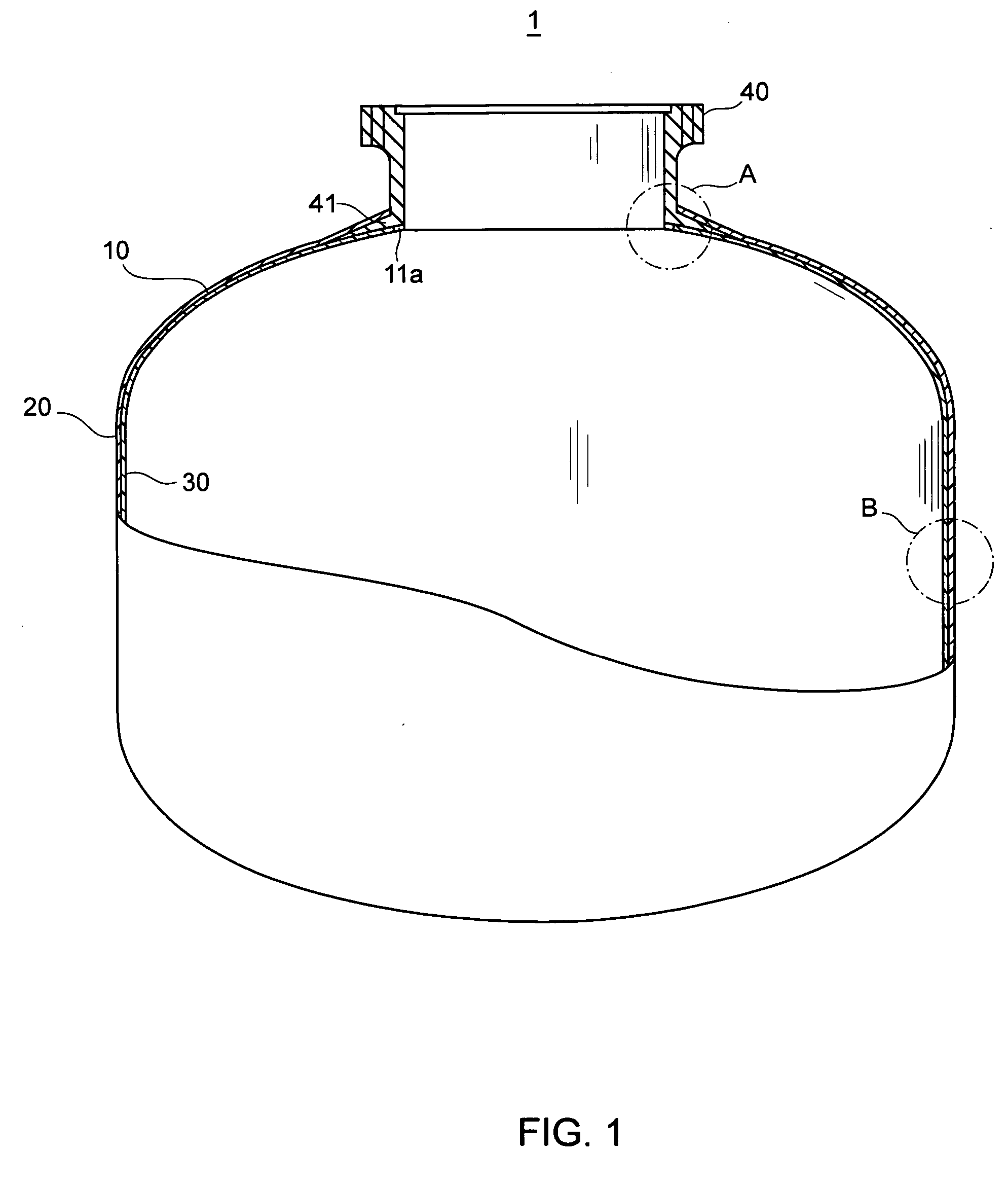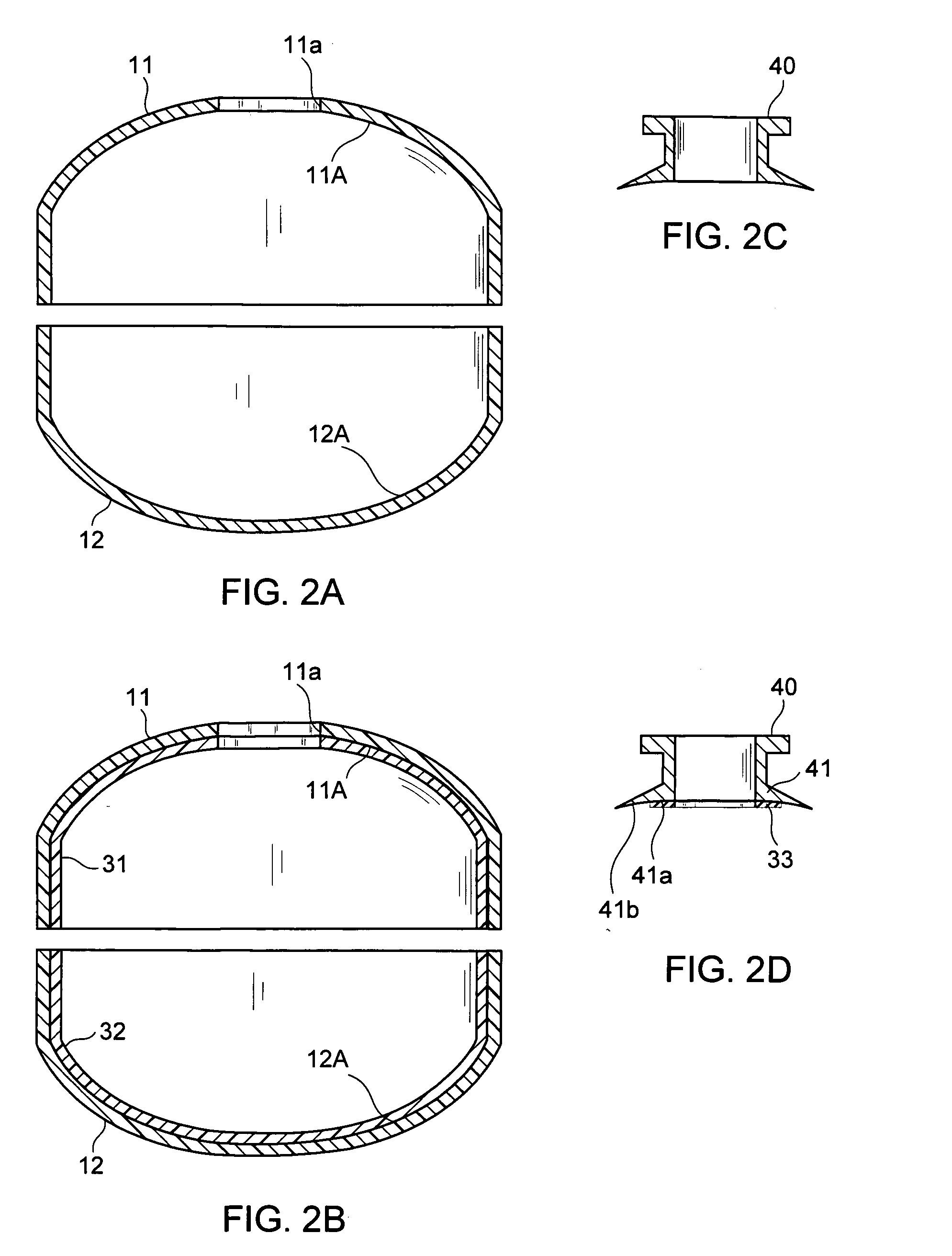Tank for very low temperature liquids
a tank and liquid technology, applied in the direction of container discharging methods, vessel construction details, transportation and packaging, etc., can solve the problems of fuel leakage through cracks, high manufacturing cost, heavy weight, etc., and achieve the effect of preventing crack generation
- Summary
- Abstract
- Description
- Claims
- Application Information
AI Technical Summary
Benefits of technology
Problems solved by technology
Method used
Image
Examples
Embodiment Construction
[0030] Embodiments of the present invention are described below in accordance with accompanying drawings.
[0031] First, the structure of a tank for cryogenic liquids according to the present invention is explained with reference to the drawings. The tank 1 in FIG. 1 is for holding a cryogenic liquid such as liquid hydrogen, liquid oxygen and the like to be used as fuel for a rocket, and comprises an inner shell 10, an outer shell 20 which is provided on the outer surface of the inner shell 10, and an airtight resin layer 30 which is provided on the inner surface of the inner shell 10, and a joint section40 which is provided in the top section of the tank.
[0032] The inner shell 10 serves for maintaining the shape of the tank, and is comprised of a fiber-reinforced resin composite material which can withstand temperatures above the melting point of the airtight resin layer 30. (That is, neither deformation nor degradation in strength occurs at the melting point of the airtight resin ...
PUM
| Property | Measurement | Unit |
|---|---|---|
| Temperature | aaaaa | aaaaa |
| Pressure | aaaaa | aaaaa |
| Melting point | aaaaa | aaaaa |
Abstract
Description
Claims
Application Information
 Login to View More
Login to View More - R&D
- Intellectual Property
- Life Sciences
- Materials
- Tech Scout
- Unparalleled Data Quality
- Higher Quality Content
- 60% Fewer Hallucinations
Browse by: Latest US Patents, China's latest patents, Technical Efficacy Thesaurus, Application Domain, Technology Topic, Popular Technical Reports.
© 2025 PatSnap. All rights reserved.Legal|Privacy policy|Modern Slavery Act Transparency Statement|Sitemap|About US| Contact US: help@patsnap.com



